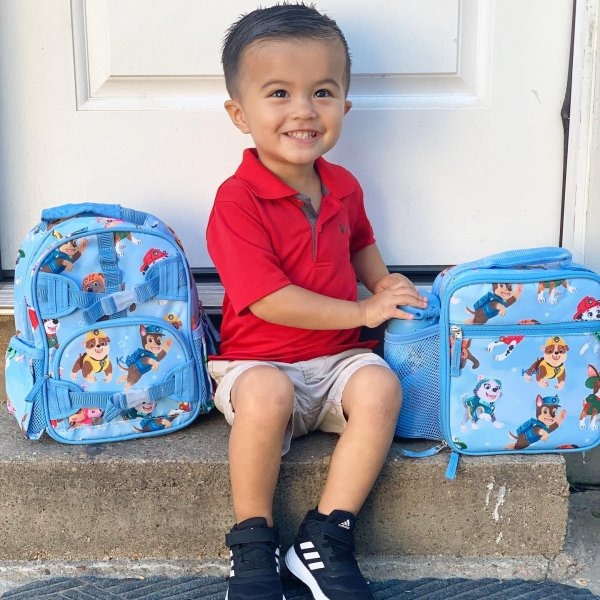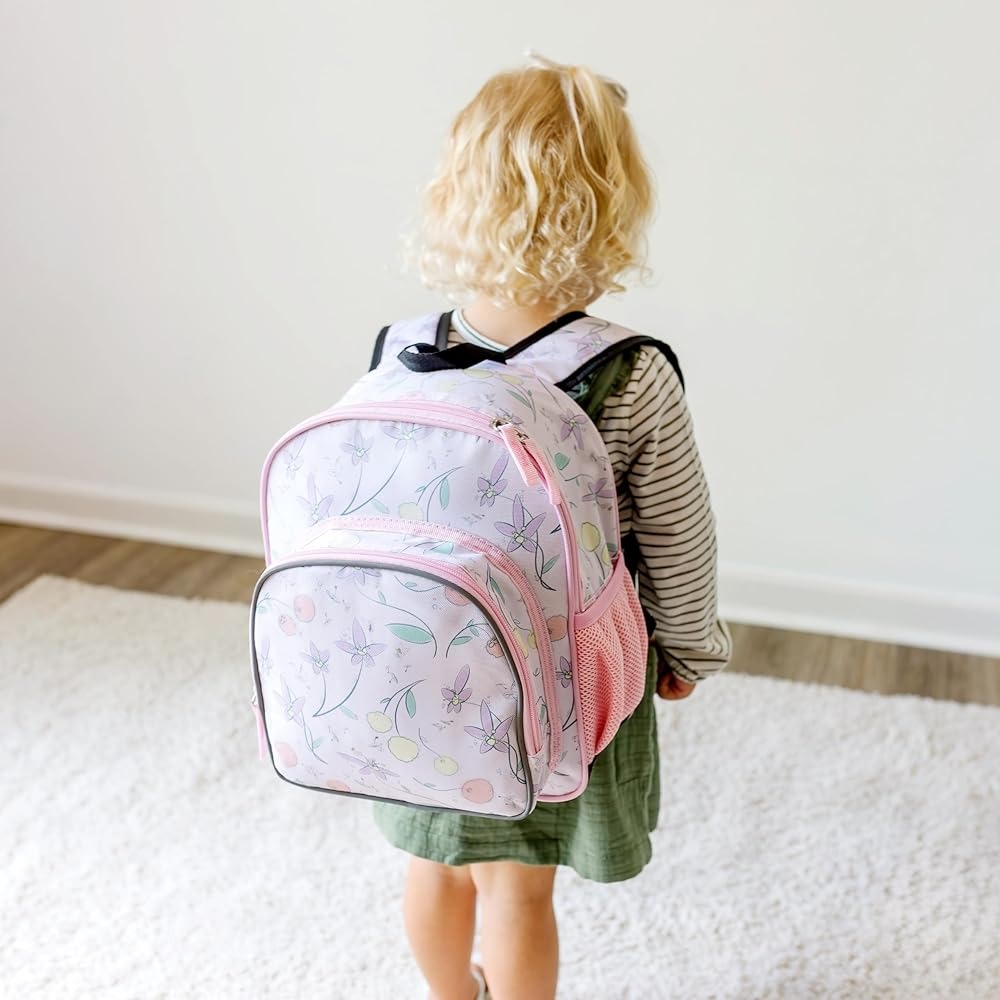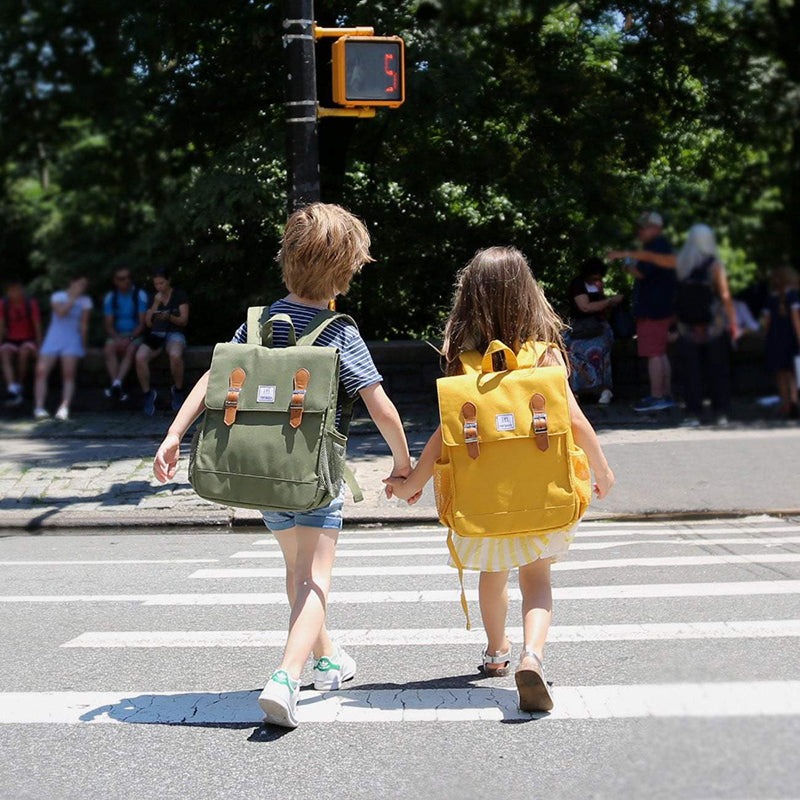Key Considerations for Selecting Backpacks for Kids
When it comes to selecting backpacks for kids, several key factors must be considered to ensure both comfort and functionality. The right backpack can significantly impact a child’s physical health and school experience. Here are few essential considerations:
- Size and Fit: Choose a backpack that is proportionate to your child’s body size. It should not hang more than four inches below the waistline to ensure proper weight distribution.
- Adjustability: Look for backpacks with adjustable straps. This feature allows the backpack to grow with your child and helps maintain a good fit over time.
- Compartmentalization: Multiple pockets and compartments can help distribute the weight more evenly and keep items organized. This is crucial for kids who carry various school supplies.
- Material Quality: Opt for backpacks made from durable, lightweight materials that can withstand the wear and tear of daily use.
- Safety Features: Reflective materials on backpacks enhance visibility, ensuring your child’s safety during early morning and late afternoon commutes.
- Comfort: Padded straps and back panels provide added comfort and protect against the strain on the shoulders and back.
- Style: Lastly, consider the design and color. Children are more likely to use a backpack they love aesthetically, which can make their school experience more enjoyable.
Choosing the right backpack involves balancing several aspects, including ergonomics, durability, and visual appeal, to find the best option for your child. Next, we’ll explore specific age-appropriate sizes for kids’ backpacks.
Age-Appropriate Backpack Sizes

Selecting a backpack that fits your child’s age and size is vital. Young children need smaller backpacks to prevent back strain. For preschoolers, a backpack should be small, light, and easy to open. Elementary students may need a bit more space for books and supplies but still require a compact design. Pre-teens and teenagers will require larger backpacks to accommodate heavier books and technology.
- Preschool: Opt for backpacks not exceeding 12 inches in height to ensure they match the child’s torso.
- Elementary School: Choose backpacks up to 15 inches tall to provide adequate space without being oversized.
- Middle School and Beyond: Look for backpacks that are 18 inches or higher but ensure they fit snugly against the child’s back.
A backpack’s height is a starting point – its width and depth are equally important. The backpack should not extend beyond the width of your child’s shoulders or look oversized compared to their body. It’s crucial that the backpack distributes weight evenly, with items packed closely to the back to support better posture and reduce the risk of back pain.
Features to Look for in a Kid’s Backpack
When shopping for backpacks for kids, several features stand out as must-haves. Ideal backpacks combine functionality with clever design to support a child’s busy school day. Here are some essential features parents should consider:
- Padding: A good backpack offers ample padding on the straps and back area. This reduces stress on the child’s shoulders and back.
- Lightweight Materials: Backpacks made from lightweight fabrics help prevent unnecessary strain. Kids can carry them with ease.
- Durability: Look for sturdy zippers and reinforced seams. These details mean the backpack will hold up better over time.
- Water Resistance: A water-resistant backpack protects books and electronics from rain or spills.
- Ease of Cleaning: Kids are active and their backpacks get dirty. Choose one that is easy to clean.
- Color and Design: Bright colors or favorite characters can make a backpack appealing to kids. They’ll be excited to wear it every day.
- Safety: Opt for designs with reflective elements to keep kids visible in low light.
Remember, the best backpack for your child should tick off these features while also fitting into your budget. Next, we’ll discuss the ergonomics and health implications of backpacks for children.
Ergonomics and Health Implications for Children
When choosing backpacks for kids, ergonomics play a crucial role. A well-designed backpack promotes good posture and prevents physical strain. Here are vital points to consider for your child’s health:
- Supportive Design: A backpack’s design should support the natural curve of the spine. Look for ergonomic features that help balance the load.
- Weight Distribution: A backpack should distribute weight evenly across the child’s shoulders and hips. This reduces the risk of muscle fatigue and back pain.
- Proper Straps: Wide, padded straps are essential. They lessen the pressure on the shoulders and neck, helping to avoid discomfort.
- Light Load: Encourage your child to carry only what’s necessary. The backpack’s weight should not exceed 10-15% of your child’s body weight.
- Regular Checks: Monitor your child’s backpack habits. Make sure they’re wearing both straps and adjusting the fit as they grow.
Ignoring these ergonomic guidelines can lead to health issues such as poor posture, muscle strain, and even long-term back problems. It’s important to teach your child to use their backpack correctly and adjust it regularly for the best fit possible. Remember, a child’s health and comfort are just as important as the backpack’s style or design.
Top Backpack Trends for Kids in 2024

As 2024 approaches, backpack trends for kids showcase both style and practicality. Popular trends include:
- Eco-Friendly Materials: Many backpacks now feature sustainable fabrics. These backpacks appeal to eco-conscious families. Parents and kids alike favor these environmentally friendly choices.
- Tech Compatibility: With more schools integrating technology, backpacks have adapted. They include compartments for tablets and laptops, complete with padding and security. This ensures devices are safe and accessible.
- Bold Prints and Colors: Bright and bold colors remain a favorite among kids. They enjoy expressing themselves with vibrant patterns. Superhero and cartoon themes are particularly popular.
- Convertible Designs: Versatility is key in 2024. Backpacks transform into crossbody bags or come with detachable sections. This flexibility is ideal for various school activities.
- Built-in Safety Features: Safety continues to be a priority. Backpacks now often include reflective panels and GPS trackers. This trend aims to keep children safe during commutes.
Parents seeking the perfect backpack for their kids in 2024 have a variety of trends to consider. These trends balance style with function, ensuring kids not only look good but also feel good.
Comparing Durability and Price Points
When shopping for backpacks for kids, comparing durability and price points is essential. A cost-effective backpack that lasts can provide good value for parents. Here’s how you can assess the durability and manage the price aspect:
- Material Quality: Strong materials like nylon or polyester offer longevity. Check fabric strength when considering backpacks.
- Reinforced Construction: Look for reinforced stitching and durable zippers. These features prevent common wear points.
- Warranty Options: Brands that offer warranties reflect confidence in backpack durability.
- Price Considerations: Don’t equate high cost with quality always. Some affordable backpacks perform well over time.
- Brand Reputation: Research brand reliability. Established brands may offer better quality assurance.
Remember, the sturdiest backpack might not always be the most expensive one. Balance your budget with the need for a durable product. It’s about finding the best backpack that offers both quality and the right price. This choice will ensure your child’s comfort, health, and style throughout the school year.
Best Backpack Brands for Kids

When choosing backpacks for kids, brand reputation plays a key role. Certain brands are known for their quality and durability, making them ideal choices for your child’s needs. Here are some top backpack brands that have earned their stripes in the realm of kids’ backpacks:
- Jansport: They are famous for their robust materials and lifetime warranty.
- Herschel Supply Co.: Known for stylish designs with great functionality.
- The North Face: Offers durable outdoor gear, including rugged backpacks for kids.
- Pottery Barn Kids: Provides personalized options in kid-friendly designs.
- Nike: A go-to for sporty, lightweight backpacks suited for active kids.
These brands focus on making backpacks that withstand daily use while keeping comfort in mind. They offer various styles to cater to individual preferences and needs. When selecting from these brands, consider the features previously mentioned to ensure the backpack meets all your criteria for durability, ergonomics, and style.
Tips for Personalizing Backpacks for Your Child
Personalization can make a backpack more than just a storage item for your child. It transforms it into a unique expression of their personality and interests. Here are some tips to help personalize backpacks for kids:
- Embroidery or Patches: Add your child’s name or initials through embroidery. You can also use iron-on patches that reflect their hobbies or favorite characters.
- Keychains or Zipper Pulls: Let your child pick out funky keychains or colorful zipper pulls. These small additions are fun and easy to swap out.
- DIY Decorations: Encourage creativity by letting your child decorate their backpack with fabric markers or stickers. They’ll love showing off their artwork.
- Customization Services: Some brands offer custom services where you pick the colors, patterns, or even material. This can be a great option if budget allows.
Keep in mind, too much weight from decorations can cause strain. Make sure the backpack stays practical for daily use. With these personal touches, your child’s backpack will stand out and be truly theirs. They’ll feel special and confident with a backpack that perfectly captures their spirit. Remember to keep durability in mind when personalizing to ensure the backpack lasts through the school year.